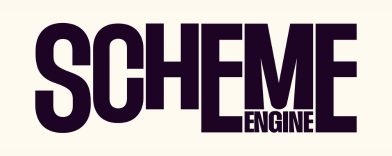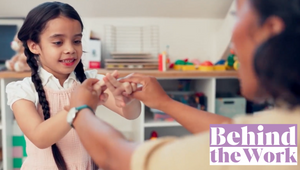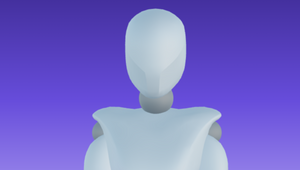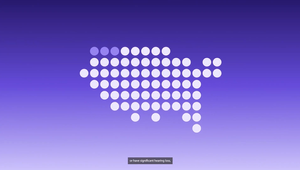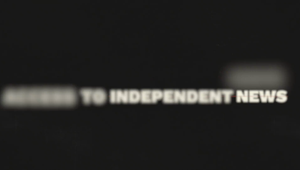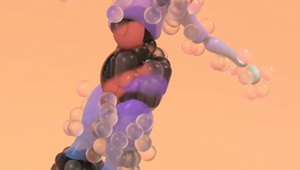
Why Bang & Olufsen Is Giving Everyone a Unique Dancing Avatar

Today, Bang & Olufsen launches its latest brand campaign, ‘See Yourself in Sound’. It’s by no means a standard approach for the audio technology brand. Instead of anything traditional, it brings life to a listener’s music taste in the form of interactive avatars that are totally unique to each person’s musical taste.
Since its birth in 1925, Bang & Olufsen has been at the forefront of audio technology and a brand that is held in high regard by music lovers all over the world. A heritage and history built on doing things differently sat at the core as this campaign developed, conceptualising a new visual identity that honours Bang & Olufsen’s past, whilst paving the way for its future. Taking an idea that places the brand in a new direction, and finetuning it into a campaign that lives across social and physical activations was the task taken on by Bang & Olufsen’s creative team, and agency partner Hello Monday/ DEPT.
The Danish brand had good awareness when it comes to the UK but wanted to match that in other parts of the world. “There's a big shift in the company from going from a very functional way of talking about ourselves – like product communications, which isn't really the emotional benefit of why you buy into the brand – into a place where it's much more aspirational, much more experiential,” says the brand’s creative director Paul Collins.
For the first brand campaign, Paul and his team wanted to celebrate people’s unique affinity with music, in a way that gen z – an age bracket largely unaware of Bang & Olufsen – would engage with.
In the beginning of this project, it wasn't a digital campaign. “It actually started off as a film,” says Paul. The team was inspired by Nick Cave’s Soundsuits who makes all these suits in loads of different materials. “And what was really interesting was the people in these suits look a little bit like creatures, the way that they move when they dance, with all these materials moving in different ways.” The first idea that the creatives brought to Paul was to work with a fashion designer and do a collection where everyone looks like these creatures, make a custom track and shoot them to capture their movements to the music.

“It was great, but we needed something that reaches out beyond film,” he says. “We hadn't gotten a massive amount of media spend, so we needed to come up with an idea where the vehicle for the idea was the idea itself. It needed to syndicate itself.”
Working around music, Spotify looms large, as the biggest streaming service with over 450 million people. Spotify ‘Wrapped’ was used 60 million times at the beginning of 2023. “It felt like a mechanic we wanted to use,” says Paul. “But we really wanted to develop it into something that isn't just a subpar version of what Spotify is already doing. We really wanted to push the envelope so it became something more. Because even ‘Wrapped’ is a little bit generic in terms of what you get as a badge. It's not 100% bespoke. We wanted to push it even further.”
The campaign became an invitation to take part in the ‘See Yourself in Sound’ experience by visiting a specially designed website (senses.bang olufsen.com), where they can link their Spotify account to create a bespoke, shareable 3D avatar. Participants without Spotify accounts can complete a short questionnaire on the ‘See Yourself in Sound’ website to access their bespoke avatar.

Using the answers to the questionnaire, or the listening history of each participant’s Spotify account, the site will generate a result that considers mood, energy and groove, presenting a unique avatar in full motion, matching the music taste of the user. This avatar can then be downloaded in motion and shared across a plethora of social media platforms.
“The aim of this campaign is to reach that audience and do it in a way that doesn't feel like it's just advertising,” says Paul. “We're not asking anything of them. We're giving them something back in the form of an experience. It is about literally looking at your avatar as an interpretation of your sound.”
Accessing a user’s listening history via Spotify allows for the hyperpersonalisation element of ‘See Yourself in Sound’ to come alive. When processing the data, the website will take individual prevalent songs, albums and playlists to craft the body, limbs and accessories (and more) of each avatar, meaning no two will look the same.

“If you look at what's happening in terms of avatars – everyone having their digital representation in the digital world – this is something that gen z is super interested in,” says Paul. “They're all about self reflection and individualism. They want to look different. We looked at that world and we analysed the world of avatars. What we saw was a sea of same. The brand has always been about doing things very, very differently. So we really challenged ourselves.”
That required looking at how different people’s tastes play out on Spotify and translating that into a grid that gave a visual representation to different kinds of sounds. “There's lots of different ways you can look at the different energy and the colours etc.,” says Paul. “We had to do this whole thing with Hello Monday, where it becomes a bit of engineering and how you break down music genres into something that reflects something that would stick to this body shape that was moving around.”
The materials that Bang & Olufsen uses to craft its products are a key part of the brand’s value and that needed to be reflected. “You'll see it in some of the avatars that you create,” says Paul. “We've used a lot of the natural materials that we use in our products like the same metal, aluminium, the fabrics, etc. We wanted to pull a correlation, without it feeling too forced.” These various aspects of the avatars were crucial. “I think Hello Monday thinks we're a pain but we've really gone crazy when it comes to the textures and the shapes of these things, how they use the aura. There's so many different layers there.”

Movement was something else that the team obsessed about creating the experience. The way your avatar dances is as unique as how it looks. The brand and Hello Monday worked with the Copenhagen Contemporary Dance School. Using their grid of different genres, and how they were translating these into energies, they had to find the right movement for each. “The dance moves are what makes this thing incredibly human because a lot of the time you wouldn't know what it is because it's quite abstract,” says Paul. They tracked the bodies on the dancers with motion capture suits and then that got translated into the various moves the tool uses, aggregating into a complex API that breaks it down the different colours, textures and modelling of each avatar. “That's what makes it super unique,” says Paul.

“You'll also get this little Pokemon-esque card that comes up and tells your energy level,” he says. “From a technical standpoint, it's magic. But also elevating to an experience that is more memorable and giving something back to the audience versus just disrupting their time because advertising is incredibly annoying. I think we've done that in a good way.”
The copy was another way to assert this individuality. “What your avatar is called is something that feels unique to you,” says Paul, “giving it that feel for individualism. Because we know that's what people will share. If it's exactly the same as everyone else, you wouldn't want to share it.”
Now it’s out in the world, it’s time for the brand to sit and see how people interact with it. “This is gonna be the really interesting thing – people seeing it, going in and testing it. It's going to be very, very interesting to see how it gets shared.”






